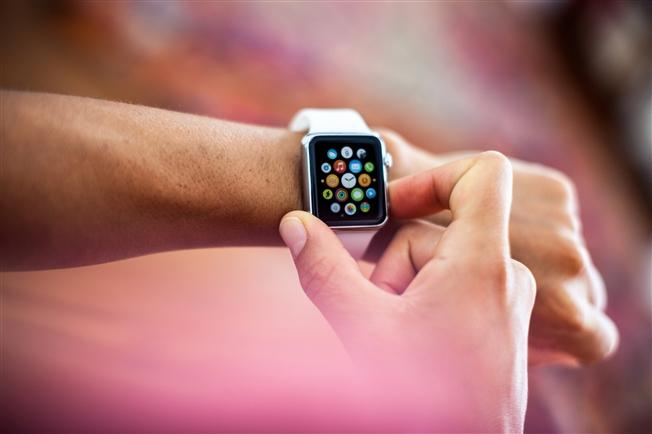Is the Apple Watch's new EKG test safe to use?

Thanks to the evolution of medical technology and devices, it’s easier than ever to manage your health remotely. We can easily conduct at-home health screenings for blood pressure and blood sugar levels, and testing kits are available for everything from allergies to HIV.
Now, there’s a new test that’s getting the ‘at-home’ makeover—the electrocardiogram (EKG).
During the unveiling of its new Apple Watch Series 4, Apple introduced a feature that allows Watch wearers to use the device as a heart monitor. It’s the first FDA-approved, over-the-counter EKG test available to the public.
An EKG on your wrist sounds like a feature that might offer peace of mind to anyone who has panicked about heart palpitations before, but what should you know before you invest in this new technology?
What is an EKG?
An electrocardiogram, or EKG, is a test that records the electrical signals in your heart. EKG tests are commonly conducted in doctor’s offices, emergency departments, urgent care centers and other health care settings when a patient presents with symptoms like chest pain, shortness of breath or an irregular heartbeat.
During your EKG test, your doctor or health care provider will attach several sensors, called electrodes, to your chest and limbs to monitor electrical activity. A regular heart rate is between 60-100 beats per minute. Any activity that indicates your heart is beating slowly, quickly or irregularly will be indicated on your results. EKG results are typically available immediately.
The Apple Watch’s EKG tool won’t use electrodes to detect the heart’s electrical signals. Instead, users simply push and hold the crown of the watch for 30 seconds. If the device detects an irregular heartbeat, it will notify the user and prompt them to visit or notify their physician.
Is it safe to use the EKG available on Apple Watch?
An EKG test is simple, non-invasive, painless and can provide timely notification of a cardiac event. What could be the harm in making it available on a smart watch?
“There’s not necessarily any harm in making EKG tests available to the general population. It's a portable, affordable way to be more involved in your health care which is a phenomenal thing. However, I do think users need to exercise caution when utilizing the EKG functionality,” says Jason Bradley, MD, sports cardiologist with Lankenau Heart Institute.
While preliminary testing has suggested that the Watch’s EKG results are relatively accurate, Dr. Bradley emphasizes that—just like a traditional EKG test—false positives (a test saying you have a condition when you actually do not) are possible. “Despite the accuracy of this technology, there is still room for error. It looks at your heart from only one angle, versus a traditional EKG, which looks at your heart from 12 different angles. A false positive can be alarming for a person, and might cause them to visit the doctor, emergency department or an urgent care center unnecessarily,” says Dr. Bradley.
If you’re experiencing an irregular heartbeat or other symptoms, like chest pain, tightness, shortness of breath or feeling lightheaded, it’s always best to play it safe and visit the doctor—even if your results aren’t accurate. But by allowing users to screen themselves, the Apple Watch technology may inadvertently lead to unnecessary health care costs and time spent at the doctor’s office.
Dr. Bradley says that another concern is that users may be screening themselves too frequently, even when they do not have symptoms. These “just because” screenings can lead to unnecessary anxiety about the results. If, for example, your results indicate that you have an irregular heartbeat, you may assume your heart is at risk. That’s not always the case.
“An irregular heartbeat, a condition called arrhythmia, isn’t necessarily a cause for concern. Many people live healthy and normal lives with an arrhythmia,” explains Dr. Bradley. “Unless your EKG test is conducted and interpreted by a health care professional, you might not realize it is a benign condition and may not be cause for concern.”
When to use the Apple Watch’s EKG feature
With all of this in mind, Dr. Bradley assures Apple Watch Series 4 owners that it’s safe and okay to use the EKG feature, but do so with caution and with the understanding that your results may not always be accurate. Above all, don’t use this technology in place of traditional medical care.
“If you’re experiencing shortness of breath, chest pain or tightness, headache, fatigue, dizziness, nausea or pain in your jaw, neck or limbs, don’t turn to your Apple Watch. Call 911,” urges Dr. Bradley. “Recognizing the symptoms of a cardiac event is still the best way for a person to detect a problem early.”
Main Line Health serves patients at hospitals and health centers throughout the western suburbs of Philadelphia. To schedule an appointment with a specialist at Main Line Health, call 1.866.CALL.MLH (225.5654).
 Content you want, delivered to your inbox
Content you want, delivered to your inbox
Want to get the latest health and wellness articles delivered right to your inbox?
Subscribe to the Well Ahead Newsletter.
